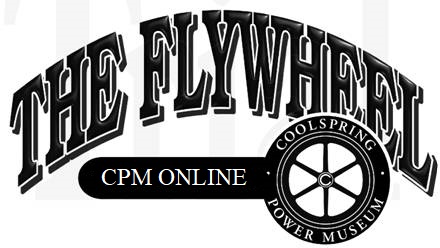
April 2022
My Little Maytag
By Paul Harvey
Why am I writing about Maytag when CPM has so many fine engines here?
I guess its nostalgia creeping
in. One day, I was thinking about
some of my early engines and the little two-cylinder Maytag popped into
my mind. Gosh, I sure had fun
with it way back then. Hmmm!
ďThenĒ was almost 60 years ago!
So, the idea of a story appeared,
and I am glad to share it with my readers.
Here goes!

As a freshman in high school, the science class had a session on
engines. Gosh, that was 1957. Many
of the guys brought in examples and I was impressed.
I had fooled around with a little old Briggs and Stratton that my
dad had, but had never seen any of these two-cycle models.
One kid had a two-cylinder Maytag
and I bought it for $2.00. Wow!
A little two-cylinder gas engine!
Now what to do with it? So, my
dad and I spent a winter taking it all apart, learning how it works, and
even making a base for it. No
Internet then, so we were on our own. Try
something and whoops, wrong thing, so try again and gosh it works!
I had fun belting it up to
several applications. Some were not very successful.
But now letís move up a few years to when I was in college at St.
Vincent. Exploring down in their junkyard, I found a 1948 Olds woody
station wagon. Idea!
I took off
the generator and regulator, and made a light plant with the Maytag.
Guess that was 1963.
Wow!
It worked great with 6-volt light
bulbs. They were common in the
hardware store then. So, the
little engine lived again. I even
took it out to Clear Creek State Park on some camping trips and lighted
the little Shasta trailer with it. Gosh, those were the good old days.
It worked so well, as long as no
one was near enough to complain!
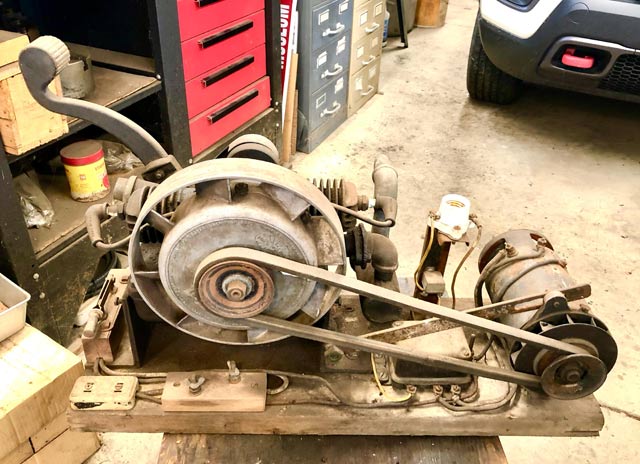
Jumping now to the present and considering the long winter ahead, I
asked Kenny and Bo to bring it over to my warm garage so I could get it
running. I needed a project to
keep me busy through all the cold and snowy days!
Looking at it, I thought that I
was quite ingenious then, but I was disappointed in my shoddy
workmanship. I guess I was always
in a hurry, but I bet I could do better this time! Youíll see the
results a bit later.
There has been so much written about the Model 72 Maytag that I donít
think that I can add any more. Manuals
and parts are available online now. But
who invented them? So, letís take
a look into that.
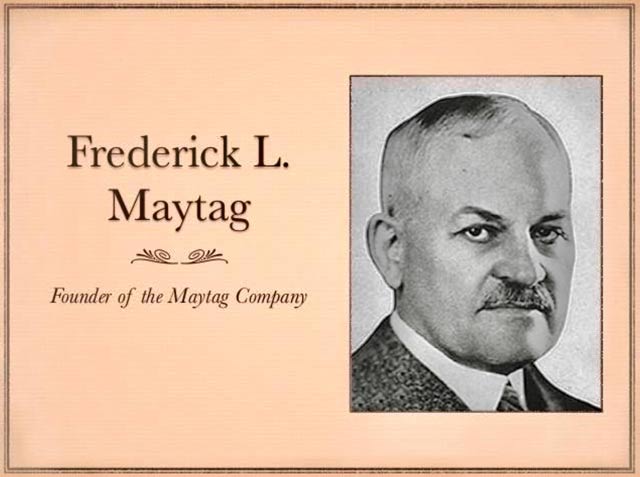
Fredrick Louis Maytag, later known as F.L., was born in Elgin, Illinois,
on July 14, 1857. He founded the
Maytag Corporation, which was finally acquired by Whirlpool in 2006.
Iím sure many of us have a least
one Maytag appliance in our homes. Whoops, Iím getting ahead
of myself, so we will go back in time a bit.
F.L. was the eldest child of ten children born to his German-Jewish
immigrant parents. The original
family name was Maitag, meaning May Day in German, but was Americanized
to Maytag. They didnít have much,
but they were determined to find a home in the great American Midwest,
then the frontier. That they did,
but F.L. was determined to go further. His
is a great story of success, rising from such humble beginnings.
The Great American Dream coming
true. Letís take a look!
In 1893, F.L., with his two brothers-in-law, and George Parsons,
established a company to manufacture farm implements.
After all, agriculture was the
main occupation in the new Midwest, and anything to make the farmer's
life better would be well accepted. F.L.
proved to be a very ingenious inventor, seeing the needs of the people.
He was soon in control of the
entire new company and expanding into other products.
In 1907, he turned to washing machines. Yep, washing clothes was drudgery for the farmerís wife. These first machines were hand-operated, but easier than the competition. They sold well! Great, he had a new successful market going, but now to make it better. Hmmm! Yep, he did! In 1911, he invented a little gas engine and added it to his washing machine. Yikes, they sold like hotcakes! Can you imagine running a cantankerous and stinky gasoline engine to wash your clothes today? No, but it was wonderful in its day, and a great new business was started.
The history of the Maytag engines is well documented and will not be
discussed in this article. Briefly,
there was a variety of vertical models that transitioned to the
well-known single-cylinder model. These
engines worked well but were always rough running.
The twin came out in 1937 and
lasted until 1952, when gasoline engine washing machines were
discontinued. With their improved
governing system, they were very smooth running and pleasant engines.
In 1922, Maytag came out with the Gyrofoam washer which placed the
agitator on the bottom, instead of the usual top agitator.
Wow!
The Gyrofoam worked very well and
again sales boomed. This design
also pioneered the aluminum square tub. Finally, the leaky wooden
tub was gone. Producing a
one-piece aluminum tub was quite an accomplishment in that day.
With improvements, this design
lasted for many years and led the washing machine industry.
In 1927, he produced his one
millionth washer! Quite a
business! In 1940, Fred Maytag
II, grandson of the founder, took over the business after F.L.ís death.
It continued to prosper.
The great American Dream came
true! So, letís see how he shared
the new found wealth.
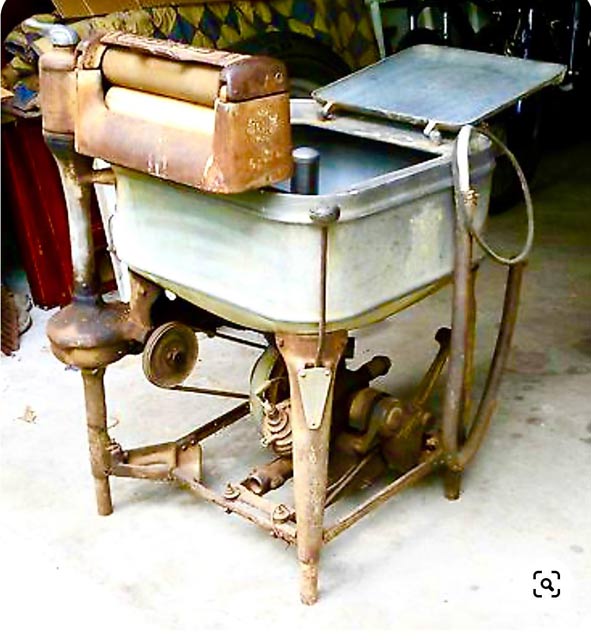
F.L. Maytag did so much for his home town, and factory location, Newton,
Iowa. That small city of 15,000 people is located in east central
Iowa, on I-80. It was a pleasant
place to live and work.
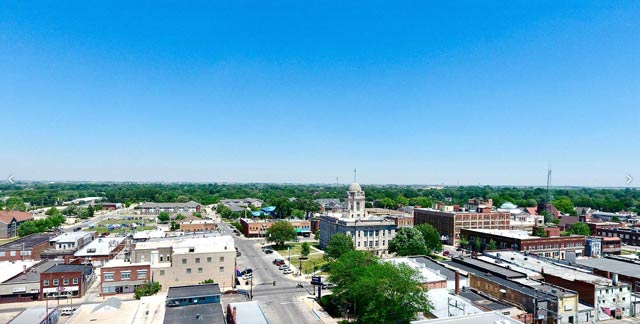
He donated 40 acres in southern Newton for Maytag Park, which included
manicured gardens, quaint paths, and a band shell for relaxed summer
concerts. Maytag Park is still well-used today.
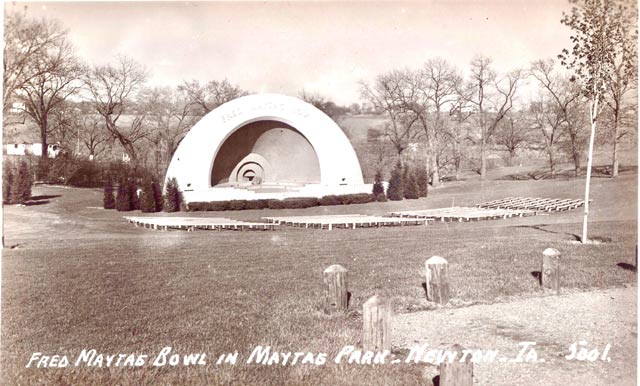
He spearheaded a new theater and water plants for the city.
Newton, Iowa, became a model city
for the Midwest. Building
hundreds of houses for his workers, he sold them on long and easy terms.
F.L. also built and donated the Maytag Hotel, which was very convenient
to the many visitors. The hotel
is still alive today, offering beautiful one and two room
apartments at reasonable prices.
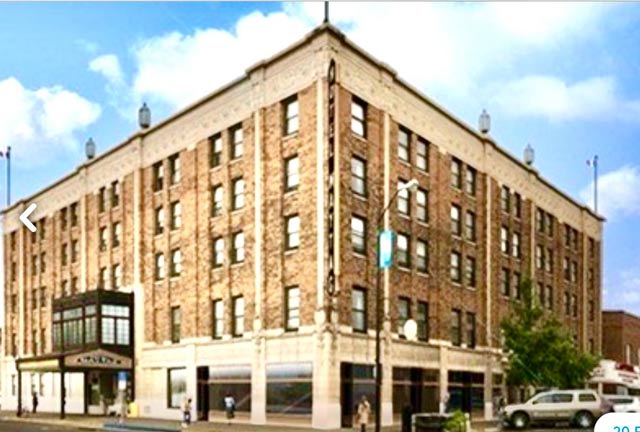
F.L. passed away from heart problems at his winter home in Beverly
Hills, California, in 1937. But
what a life he had. He left an
estate worth $10 million, which would be $184 million today!
A special train brought his
casket and scores of mourners back to Newton.
There, over 10,000 employees and
mourners formed a line five blocks long to observe the funeral
procession. He was well loved!
He is buried in the Newton Union
Cemetery. And so, a legacy came
to an end.
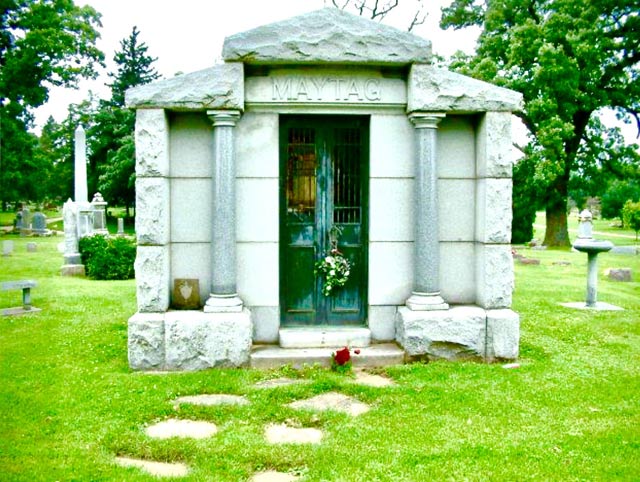
So, letís take a peek at how my present restoration came along.
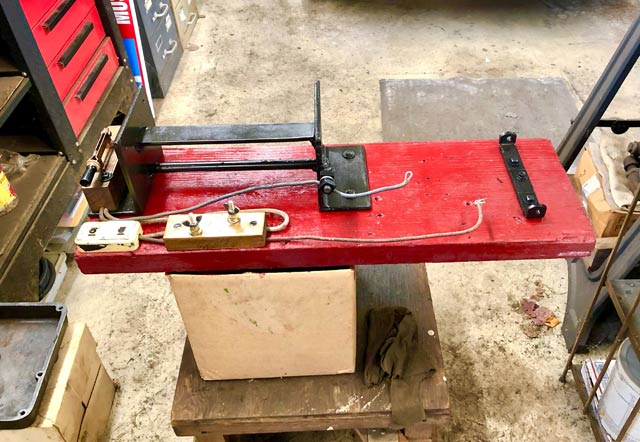
I really could not improve on my original design, and not want to, but I
sure could pay attention to detail and make it more attractive.
Paint always does wonders!
Here is the first stage of reassembly. Hmmm!
Looks better already and easy to
do.
The engine did not get painted as its original finish was very nice
after a thorough cleaning. But
all the other parts had a lot of rust under the dirt, so they got
spruced up with satin finish black paint.
The generator had already been taken apart and cleaned.
All wiring is original and
cleaned easily. Nice!
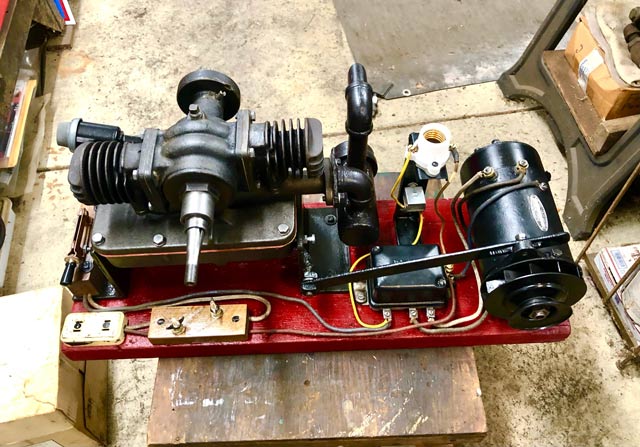
So now we see the final result. After
many years of hibernation, the little Maytag is now powering a 12-volt,
50-watt light bulb and quite happy with it.
To me, it was a great trip down
memory lane as well as a rewarding project.
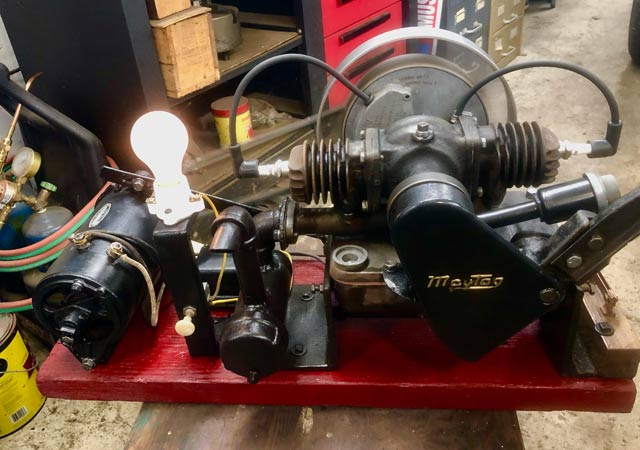
The Maytag will be displayed at the Machine Works Building at Coolspring
Power Museum. Why not visit us
this year so you can see for yourself. Now,
on to the next project!